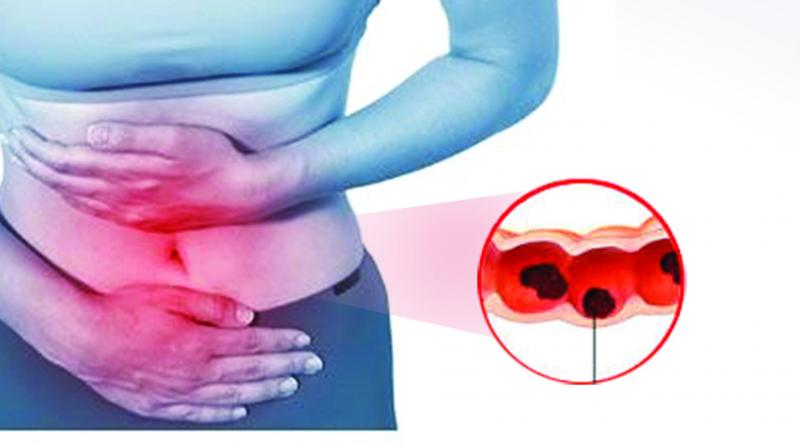The silent' rise of abdominal Tuberculosis

Hyderabad: Malnutrition, immune-suppression, diabetes, chemotherapy, improper drug compliance and monotherapy are some of the reasons for the occurance of abdominal tuberculosis (TB), which accounts for 11 per cent of the cases of extra-pulmonary TB. Abdominal TB is an infection of the abdominal organs such as the intestines, the liver, pancreas, and adrenal glands, with mycobacterium tuberculosis. Dr Mohammed Saaduddin Azmi, a senior consultant gastroenterologist, says, “In the past 10 years we have observed an increase in the prevalence of the disease due to the availability of better diagnostic techniques. Children, immune-compromised persons, patients undergoing chemotherapy, malnourished persons, pregnant women, and those living in areas inhabited by TB patients, are the most vulnerable. We have seen women in the age-group of 20 to 40 years suffering from this condition.”
Experts say that the symptoms of abdominal TB are confusing, which is why it is often mistaken for a disease of the gastrointestinal tract. Symptoms include recurrent abdominal pain, fever, weight loss, diarrhoea, obstruction in the intestine, vomiting, and the accumulation of fluid in the abdomen. The condition is largely under-diagnosed as its presentation is very subtle. Dr G. Ramesh, a senior gastroenterologist, says, “The suspicion that a condition is tuberculosis arises last, after other gastrointestinal diseases such as irritable bowel syndrome and Crohn’s disease have been ruled out. Patience is required on the part of the patients. Diagnosis may be a challenge in the initial stages, but if the condition is not treated properly, it could result in complications such as bleeding, ulceration, and intestinal obstruction. In its most severe form, the TB can affect multiple organs.”
A high index of suspicion is required for early diagnoses; this usually arises in the cases of immuno-compromised patients and those suffering from cancer. A standard six-month anti-TB therapy is the first line of treatment, and it has proven to be quite successful in patients who comply with the medical regime. In very severe cases, when there is an obstruction in the intestine, surgery may be required.Abdominal TB may recur if the initial course of therapy is not completed properly or if the patient’s immunity drops. The disease can prove to be fatal in patients suffering from severe malnutrition.
Difficult to diagnose, tests expensive for common folk
Though doctors may suspect that a person could be suffering from abdominal tuberculosis based on his symptoms, diagnostic confirmation is difficult. It requires the conduction of expensive tests including x-rays, CT-scans and biopsies. Dr B. Prabhakar, a consultant medical gastroenterologist, says, “The disease is more prevalent in immune-compromised and underprivileged groups. Such patients cannot afford expensive tests. The condition is only diagnosed at tertiary care centres, and 90 per cent of patients come when the disease has reached an aggressive stage. At this stage, very strong doses of medication is required. Additionally, a proper diet and dietary supplements are needed to ensure that the patient’s immunity does not drop.”
Detection and diagnosis of the disease at the primary healthcare level continues to pose a challenge. A senior physician, on condition of anonymity, says, “According to the current set-up, illnesses such as fever, cold and cough are detected and treated at the primary level. If tuberculosis is suspected, doctors simply ask the patient to go to a specialist. But many patients do not approach specialists in the initial stages; they go only when the disease has reached an advanced stage.” It is important to strengthen primary care in both the public and the private sector to ensure early diagnosis, which improves treatment outcomes. At present, the number of people who have completely recovered from the condition remains small.

